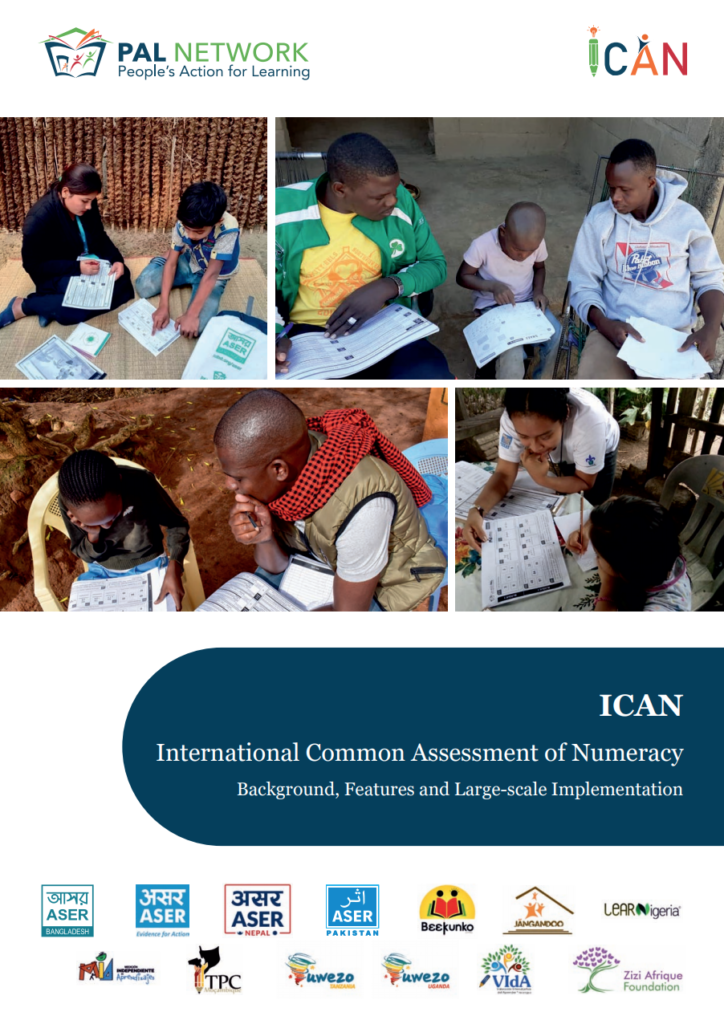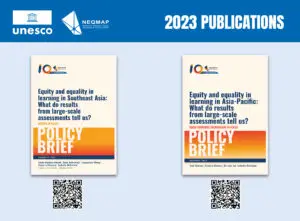A key development challenge that countries in South Asia face is the poor quality of education. Although over the last decade most countries in this region have achieved near universal enrolment in primary education (UIS Statistics, 2020), this has not translated to improved learning outcomes. In 2018, according to ASER India, only half of all children in grade 5 could read texts or solve subtraction of a grade 2 level. Similarly, as per ASER Pakistan, in 2019 less than 60% of children in grade 5 could read text or solve division of a grade 2 level. These proportions are far worse among children from disadvantaged backgrounds.
Citizen-Led Assessments (CLAs), like the Annual Status of Education Report (ASER) in India and Pakistan, conducted by the member organizations of the People’s Action for Learning (PAL) Network, have been providing evidence on the dismal state of foundational learning in these countries for some time. CLAs have helped to identify learning deficits, enabling appropriate remedial measure, like Teaching at the Right Level (TaRL) pioneered by Pratham Education Foundation in India which focusses on building foundational skills by grouping learners according to their literacy and numeracy learning levels, rather than by age.
However, results from CLA data were not comparable across countries as each country’s CLA data aligns with the corresponding national curriculum. With the launch of the new International Common Assessment of Numeracy (ICAN), the PAL Network has overcome this limitation. ICAN assesses foundational numeracy skills through tasks aligned to UNESCO’s Global Proficiency Framework, offering international comparability relevant to the Minimum Proficiency Level (MPL) descriptor for Numeracy under SDG 4.1.1(a). ICAN is an open-source that is easy to administer and available in 11 languages (Figure 1). In this regard, ICAN has the potential to be a common metric to track the foundational numeracy skills of children globally and help us understand the ways in which children are left behind.

ICAN gives a glimpse into the learning crisis in South Asia
According to the World Bank’s World Development Report (WDR), 2018, 120 million youth (15-24 years old) in South Asia lack crucial foundational skills of numeracy and literacy. It also states that shortfalls in learning begin in early grades of schooling. ICAN results, although limited to one district each from Pakistan, India, Nepal, and Bangladesh in this first edition in South Asia, support this finding. A substantial proportion of children in these districts could not solve a set of foundational numeracy tasks. For example, in Nepal’s Makwanpur district, less than 20% of students in grades 2 and 3 could manage these tasks. In fact, over half of the students in grades 4 to 6 and more than 30% from grades 7 and 8 failed to handle them (Figure 2). Research suggests that those, who do not acquire these skills in the expected grades, are less likely to do so in later years of schooling or to acquire higher-order skills.

Socio-economic disparities increase the learning crisis
Socio-economic disparities, a major concern in South Asia, play a significant role in widening learning inequalities. Studies indicate socio-economic status (SES) can be the strongest predictor of learning inequalities amongst primary school-age children, and its effect increases as children grow older (Rose and Alcott, 2015). In Betul, India where ICAN was conducted, about 52% of children in grades 4 to 6 from less affluent households achieve the MPL, while those from more affluent households achieving the MPL reach at 79% – a gap of 27 percentage points (Figure 3).

Looking ahead
The release of ICAN is well-timed and significant for several reasons. First, countries in South Asia are beginning to recognize the importance of tracking and ensuring foundational learning, for example in India, with the recently released National Education Policy for India. With the demand from a multitude of education stakeholders to address the gaps in learning, the importance of a readily available tool like ICAN is amplified.
Second, it is a simple and easy to administer standardised tool, which countries can easily adopt that enables international comparability with respect to students’ proficiency level of foundational numeracy. As the tasks of ICAN were made based on MPL descriptors for numeracy under SDG 4.1.1 (a), ICAN is a promising assessment in terms of measuring and monitoring the student progress in alignment with the SDGs.
Lastly, ICAN can provide indicators, evidence, and results, which can serve as the crucial empirical data for evidence-based policy-making. In other words, the results from ICAN can guide policymakers to seek optimal policies and take appropriate interventions for tackling the existent problems on learning disparities (i.e. from the socio-economic status, and where resources are most needed). ICAN can help identify the deficits of foundational numeracy skills, which in turn allows education stakeholders to carry out interventions that can tackle the learning crisis.
Written by: Steffi Elizabeth Thomas, Senior Research Associate, Pratham Education Foundation-ASER Centre
For more information, please contact: <steffi.thomas@asercentre.org>







